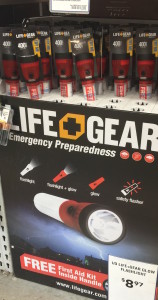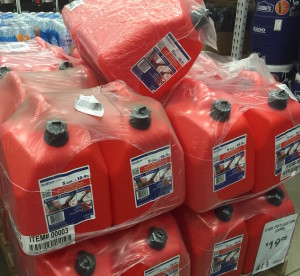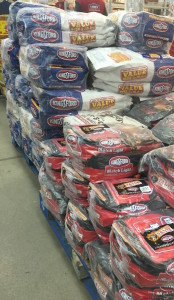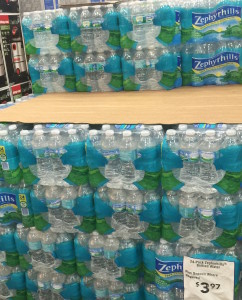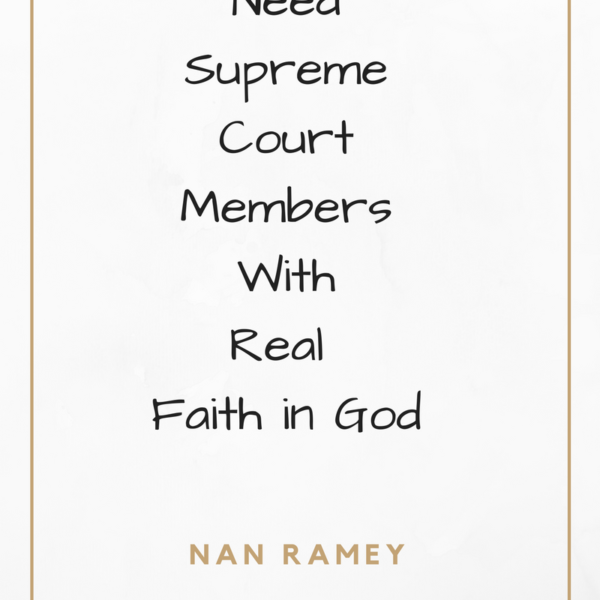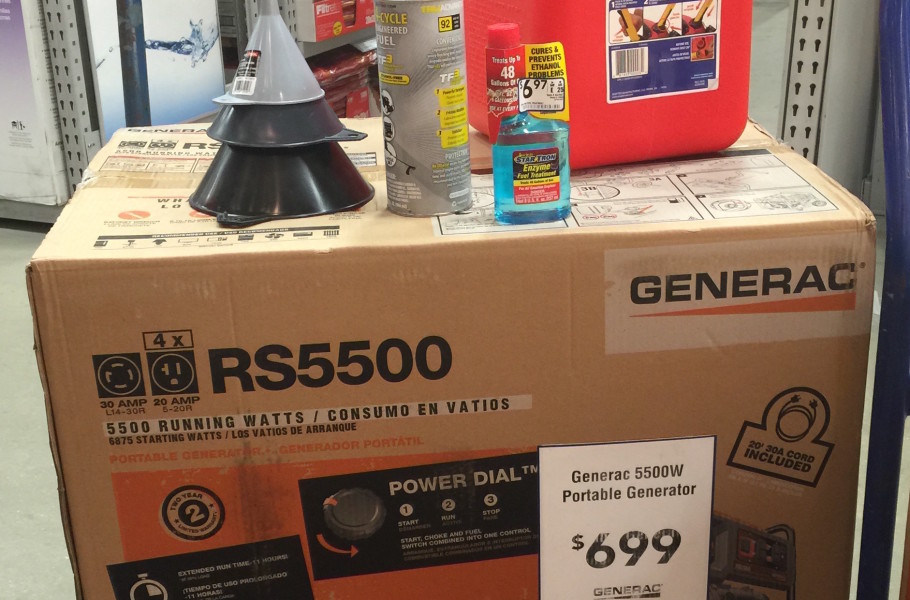
Prepare for the unexpected
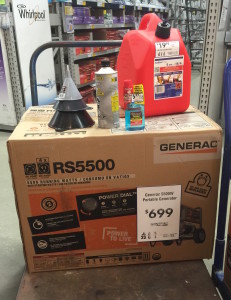
Lowes Home improvement store has these ready-to-go hurricane survival kits. On a cart and ready to go during hurricane season.
Preparing for a hurricane can be frighting. However, your actions for preparation will insure that your family has what they need in a emergency.
Hurricane Checklist
The unknown is scary for most people therefore prepping your family for such situations will help everyone relax. If a hurricane hits your area and you had no water, power, internet or phones how would you contact your loved ones to confirm everyone is ok? Here are a few steps to help you think through some key protections during this time.
Print Shelter Locations: We are all busy which means everyone may not be together during a storm. Having a list of emergency shelters in each family members home is helpful. The loss of power, internet and most sources of communication may leave you wondering. This list will at least provide information for local shelters in your area and may be the guide to contacting family members during this time. Should something happen to your home, a safe house could be located.
Family Evacuation Plan: Family members need to know the plan if the National Weather Service informs your area of an evacuation. Have local contact names, addresses and numbers and have two outlets out of town for this situation. Contacts are important should you stay at home or evacuate to another location. Letting family members know where you are is very important. Shaving an out of town family member is important because they need to know if you’re safe as they watch their news results.
Pet Plan: Your animals will be affected by the disaster also. Make a plan and remember some animal shelters may not except pets. Find out what hotel, family or friends will allow pets. Pack a pet survival bag with your animals food, medication, and water. Check tags to make sure they are current. Many times shelters need proof of this information. Have a pet taxi or pet carry-all available. If you do not have one, purchase one. This may be the only way your pet is allowed.
Spokes Person: Designate one out of town spoke person to speak on your family behalf. This will allow others to be aware of you and your family situation if communication is limited. Send out an email if possible or get someone who can communicate to help you get the word out indicating your families’ situation. Use your “designated person” so that communication will flow in a consistent manner.
Hazard/Flood Risk: Check the flood, storm surge and wind in your area. This will allow you to prepare for what is to come. There are flood areas and it would be important to know if you’re in a flood zone. Have an escape route planned before the storm just in case.
Contact Information: Create a list of local emergency outlets for your family such as local hospitals, utility companies, The American Red Cross, County Law Enforcement and so on. This may not be available if your internet is down and you do not have a phone book (and who keeps those anymore?) so generate a list to put in your hurricane kit.
Supply Kit: Put together a basic disaster supply kit for 3-7 days in case you’re without power. For water you will need one gallon per person per day. It’s important to have food for at least a 3 day supply of nonperishable food. You will also need : battery-powered radio with extra batteries, flightlights, first aid kit, whistle, manual can opener and a local map.
The Essentials: Sometime in a hectic situation you forget to pack the essentials. Don’t forget the prescription medication, glasses, cash, personal family documents, change of clothes for each person in a zip lock, wet wash cloth in a zip lock bag(my mama taught me this! You can thank me later), activities for children, matches, and feminine supplies.
Each person should have a basic disaster plan. Preparing for risk is wonderful preparation for a true emergency. Most items I have list are essential pieces of the Weather-Ready Nation.
Katie Girl
Click Below To Visit Our Store
Archives
- July 2020
- April 2020
- March 2020
- October 2019
- February 2018
- January 2018
- December 2017
- November 2017
- October 2017
- September 2017
- August 2017
- July 2017
- June 2017
- March 2017
- January 2017
- November 2016
- October 2016
- September 2016
- August 2016
- July 2016
- March 2016
- February 2016
- January 2016
- December 2015
- November 2015
- October 2015
- September 2015
- August 2015
- July 2015
- June 2015
- May 2015
- April 2015
- March 2015
- February 2015
- January 2015
- December 2014
- November 2014
Up and Coming Events
| M | T | W | T | F | S | S |
|---|---|---|---|---|---|---|
| 1 | ||||||
| 2 | 3 | 4 | 5 | 6 | 7 | 8 |
| 9 | 10 | 11 | 12 | 13 | 14 | 15 |
| 16 | 17 | 18 | 19 | 20 | 21 | 22 |
| 23 | 24 | 25 | 26 | 27 | 28 | 29 |
| 30 | ||||||



